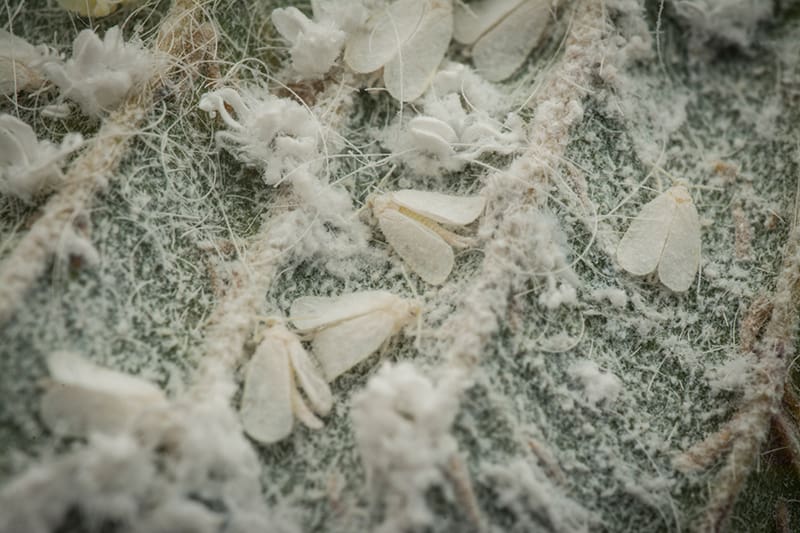Whiteflies are getting ready to make their marks, literally, on our trees and shrubs.
Whiteflies feast on more than 60 types of trees and shrubs and lay eggs in a white lacy pattern on the underside of the leaf. In the young stage, the insect feeds on the plant’s fluids with piercing mouthparts. It sucks the fluids from the leaf, similar to the way a mosquito sucks blood. The insects then excrete a sticky substance called honeydew that feeds a mold that destroys leaves, weakens trees, causes defoliation, and results in a big mess. The black sooty material covers cars, pools, pool decks, patios, pool furniture, and pretty much anything that sits below an infected tree.
Whiteflies have a great ability to rebound from the cold weather faster than their natural predators.
The trees primarily affected are Gumbo Limbo, Live Oak, Black Olive, fruit trees, and palm trees. Shrubs such as copperleaf, cocoplum, wax myrtle, and a variety of other plants also fall prey to these invasive bugs. Whitefly infestations spread from tree to tree and can cause severe landscape damage, so early treatment is critical. Weakened trees are more vulnerable to other predators and the results can be devastating. We see the largest infestations in March, April, and May.

Once we identify whitefly infestation, we can determine the best treatment options.
Treatments include deep root feeding that filters through the tree and eventually into the white flies’ bellies. In cases of severe infestation, Tree Injections where the technician must drill a hole in the tree may be necessary. We’ll do a reinspection in about six weeks to make sure there is no reinfestation.
If you suspect a whitefly infestation, do not wait. Our technicians are experts at identifying this pest early to give your trees and shrubs a better chance at survival. Give us a call today for a whitefly inspection before it’s too late.